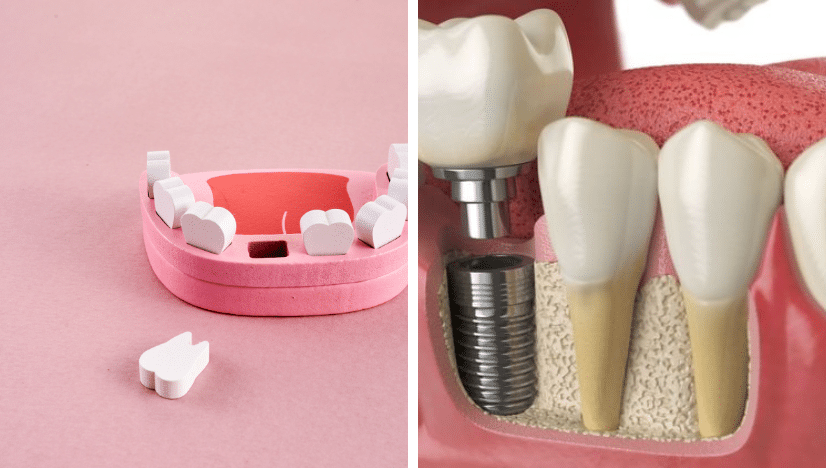
Embarking on the journey to restore your smile through dental implants is an exciting endeavor. However, sometimes, the path to a perfect smile can be complicated, especially when it comes to insufficient bone volume in the jaw. In such cases, bone grafting emerges as a pivotal solution. Let’s delve into the intricacies of bone grafting for dental implants, unraveling its significance, process, and benefits.
Understanding Bone Grafting: Laying the Foundation
Before delving into the specifics, it’s essential to grasp the fundamentals of bone grafting. In simplest terms, bone grafting involves the transplantation of bone tissue to a deficient area, aiming to stimulate new bone growth. In the realm of dental implants, bone grafting serves a critical purpose: to augment the jawbone’s volume and density, providing a sturdy foundation for implant placement.
Bone grafting is a versatile procedure catering to various needs and scenarios. Whether it’s correcting bone defects, rebuilding atrophied ridges, or fortifying compromised areas, this technique plays a vital role in facilitating successful implantation.
The Process Unraveled: A Step-by-Step Journey
- Initial Assessment: The journey commences with a comprehensive evaluation by your dental professional. Through advanced imaging techniques like CT scans, the current state of your jawbone is assessed to determine the extent of bone deficiency.
- Choosing the Graft Material: Next comes the selection of graft material, which can vary depending on factors such as availability, compatibility, and desired outcomes. Common options include autografts (bone harvested from the patient’s own body), allografts (donor bone), xenografts (animal-derived bone), and synthetic grafts.
- Grafting Procedure: With meticulous precision, the grafting procedure unfolds. The chosen graft material is placed in the targeted area, meticulously securing it to encourage integration with the existing bone structure. This step sets the stage for the body’s remarkable ability to regenerate new bone tissue.
- Healing and Integration: Post-procedure, a period of healing ensues, during which the graft material gradually merges with the surrounding bone. This process, known as osseointegration, is crucial for achieving optimal stability and support for future dental implants.
- Implant Placement: Once the graft has sufficiently integrated, the stage is ready for implant placement.
- Your dental specialist will strategically position the implants within the newly augmented bone, paving the way for a natural-looking, functional smile.
The Benefits Unveiled: A Transformational Journey
- Enhanced Bone Volume: Perhaps the most obvious benefit of bone grafting is the restoration of adequate bone volume, which may have been compromised due to factors like tooth loss, trauma, or periodontal disease. By replenishing lost bone tissue, grafting creates a robust foundation for implant success.
- Improved Aesthetics: Beyond structural support, bone grafting contributes to the aesthetic appeal of your smile. By filling in hollowed or sunken areas of the jaw, grafting enhances facial contours, resulting in a more youthful and harmonious appearance.
- Long-Term Stability: Dental implants placed in adequately augmented bone exhibit enhanced stability and longevity. This translates to a durable solution for tooth replacement, allowing you to enjoy the benefits of a confident smile for years to come.
- Versatility and Adaptability: This technique is highly adaptable, catering to a diverse range of patients and clinical scenarios. Whether you require a minor ridge augmentation or extensive bone reconstruction, grafting offers tailored solutions to meet your unique needs.
Navigating Considerations: What You Should Know
While bone grafting holds immense promise for implant success, it’s essential to be aware of potential considerations and factors that may influence the treatment process:
- Healing Time: The process of bone regeneration takes time, necessitating patience and adherence to post-operative care instructions. Depending on the extent of grafting performed, healing may take several months before implant placement can proceed.
- Risk Factors: Like any surgical procedure, bone grafting carries inherent risks, including infection, graft failure, or complications at the donor site. However, proper pre-operative planning and skilled execution can minimize these risks.
- Cost Considerations: While bone grafting is an invaluable investment in your oral health and quality of life, it’s important to discuss the associated costs with your dental provider. Factors such as the type of graft material used and the complexity of the procedure can influence overall treatment expenses.
Embarking on Your Smile Journey
In conclusion, bone grafting serves as a cornerstone in the realm of dental implants, bridging the gap between aspiration and realization. By augmenting bone volume and density, this transformative procedure paves the way for confident smiles and enhanced quality of life. If you’re considering dental implants and reside in Los Angeles, consult with a qualified Los Angeles dentist to explore how bone grafting can unlock the doors to your dream smile.
With bone grafting, the possibilities are limitless, offering a pathway to renewed confidence and self-assurance. Take the first step towards your smile transformation today.


